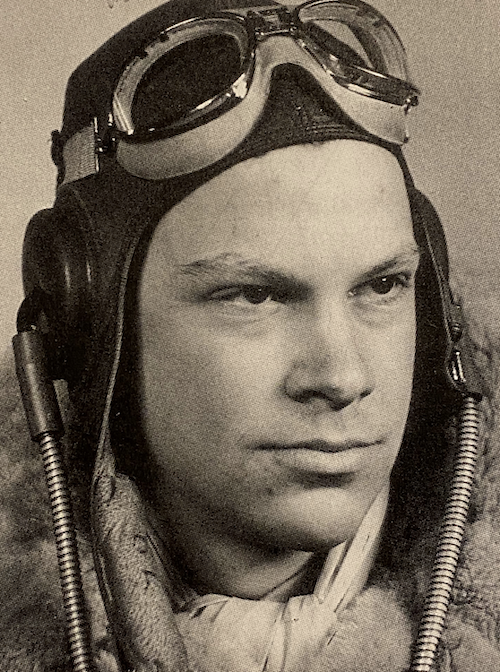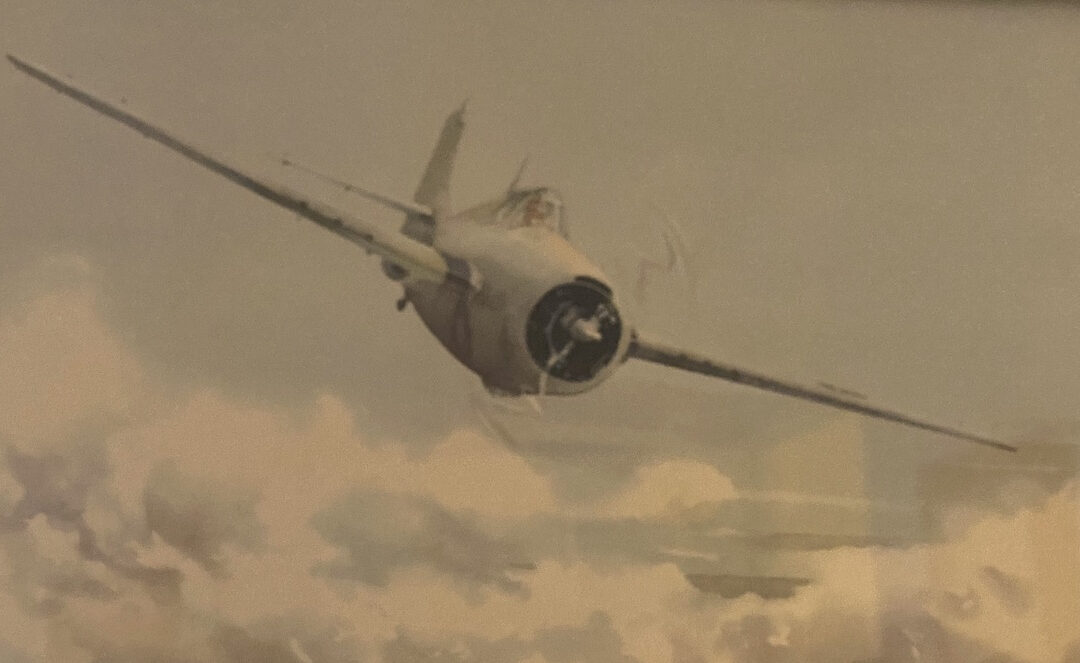One Maplewood Park Place owner resident’s heroic story of surviving a water landing during WWII
Each November 11th, Veteran’s Day, our nation honors the brave men and women who have served our country. Maplewood Park Place is home to many veterans, and we cherish the opportunity to share their stories.
John Carr and his wife, Ruth, moved to Maplewood Park Place in 2002 and lived here for 20 years. Mr. Carr passed away in 2018 but Ruth remained at Maplewood Park Place until she passed away in 2022. They both had a civic duty background. They met while Ruth was working for the CIA and John was working for the U.S. Navy. John left the Navy in 1945. After graduating from Harvard Law School, he made a career in the aerospace industry. He retired as vice chairman of the board of Grumman Corporation, the same company that had developed his F4F Wildcat fighter plane.

John served as a submarine-scouting pilot in the U.S. Navy. One night over the Atlantic Ocean, as John and his fellow pilots scanned the dark waters for German U-boats. They heard over the radio that their ship had been hit by three torpedoes and was sinking. Soon their only safe landing place had sunk beneath the black waters. With just enough fuel to make it through the last leg of their mission, it was clear he and his fellow pilots had to make quick decisions. They communicated by radio that it was best to aim for the Portuguese Island Madeira for an emergency landing.
Easier said than done. Before they lost communication with the USS Block Island, they were given instructions to fly toward land; but with a dwindling fuel supply, John grew concerned a wrong move could be catastrophic. They approached the Spanish Canary Islands under the impression it was Madeira.
Faced with the choice between a parachute landing on rugged terrain or a water landing and swimming to shore, they all agreed on the water landing. As they descended over moonlit waters, John lost contact with his fellow pilots. He was now on his own. He dropped his tailhook to try to slow down his plane. He felt the tailhook hit the water and he cut the power. The plane lurched forward as the nose dug into the water and came to an abrupt halt. He quickly jumped out of the sinking aircraft leaving behind his pack and seat cushion floatation device. All he could grab was a lifejacket. His plane disappeared beneath the water in less than 30 seconds. He could make out the sea cliffs of the island he was bobbing toward, but he was much further from shore than he had originally estimated.
Eventually he made his way to the island, but the rock conditions looked unsuitable for climbing out of the water, so he floated along the perimeter throughout the night until he eventually ran ashore. He had jettisoned his shoes for easier swimming, but without them, it was difficult and painful for John to hike the jagged rock edges of the island. He made it but a few hundred yards before giving up for the day. By then he was sure his comrades had made it to the island much easier than he had. From the rocky beach, John waved at a few fishing boats that went past, but only one stopped. The fishermen who had rescued John struggled to communicate with him in an unfamiliar language.
Assuming he was on the island of Madeira, he asked the fishermen which way to the main town of Funchal. They shook their heads. The villagers who rescued him were hospitable, giving him food and shelter but there was little they could do for him. They decided it was best to give John over to the Spanish authorities. While in the friendly custody of the Spanish army, John spoke English with a local named Jose whom he later befriended. It was Jose who finally explained to John that he was in La Palma in the Canary Islands and not Madeira. This was worrisome to John because Spain was aligned with Nazi Germany during WWII. His fear was ending up as a prisoner of war.
After a week, John was told by the local authorities that he was leaving La Palma and heading to the main island of the Canary Islands, Tenerife. At the city of Santa Cruz de Tenerife, he was delivered into the custody of the American vice consul. Spanish authorities declined to take jurisdiction over John, and he was then shipped to Gran Canaria Island. After a week of living in American consul custody, which permitted him a nice hotel room and clean clothes, he was once again moved, and this time it was to mainland Spain. Instead of the embassy in Madrid, John was sent to Cadiz. From there a private driver took him to Gibraltar.
At the border of Gibraltar, John was reunited with his naval attaché. It was then he was told he was one of only two survivors among the pilots that night. He was assured that the loss of life during the sinking of the USS Block Island was minimal. Aboard a plane headed for Casablanca, John met with friends from another US Navy ship sunk by the same U-boat that took down USS Block Island. The U-boat itself was eventually sunk by depth charges. John’s close call didn’t deter him. He went on to fight in the Pacific theater of WWII.
What John took away from this harrowing experience was the kindness of strangers. From the fishermen in the Canary Islands to the Spanish officers, the U.S. naval and consular personnel, everyone had displayed genuine goodwill toward him.
Veteran’s Day is a celebration of the living and the deceased. Through storytelling, their heroic tales can live on. We hope this encourages other owner residents to share their stories with us. Learn more about life at Maplewood Park Place by reaching out to one of our Maplewood consultants at 301-571-7441.


Recent Comments